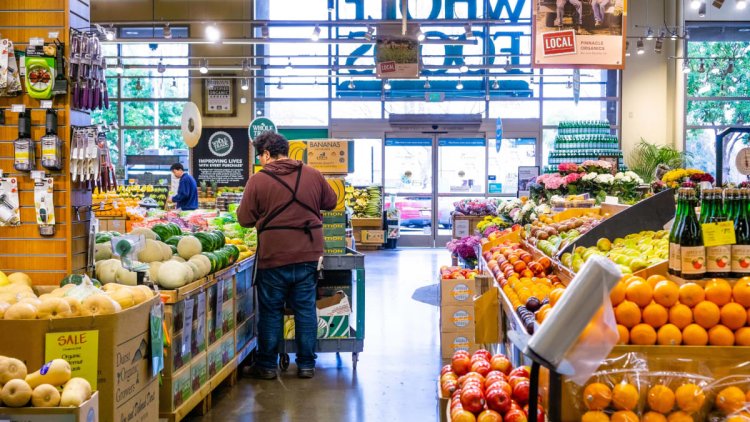Amazon Execs Are Quietly Weighing Whole Foods' Future
The $13.7 billion acquisition isn't a bad investment, per se, Amazon just isn't quite sure what to do with it.

The $13.7 billion acquisition isn't a bad investment, per se, Amazon just isn't quite sure what to do with it.
Who amongst us hasn’t stumbled home from happy hour and decided that this is the year they finally get into snorkeling, only to later get an Amazon (AMZN) - Get Free Report Prime delivery of some flippers that prompted the query “what was I thinking again?”
Impulsive Amazon purchases can cause even the most conscious consumer to scratch her head. But when Amazon itself makes a purchase for nearly $14 billion, one might imagine there's also a multiyear, highly detailed plan of execution that goes along with it.
Don’t Miss: Luxury Overnight 'Hotel Train' Could be Coming to These Major Metropolitan Cities
In 2017, Amazon acquired Whole Foods for $13.7 billion. But now, it seems like the company isn’t quite sure what to do with it.
Amazon has previously indicated it wants to compete in the mass-market grocery world, a task for which Whole Foods is an awkward fit. Often dubbed “Whole Paycheck,” it’s known for being an upscale (read: expensive) place to get fresh, organic vegetables, kombucha and craft beer, and a place to hit up the food bar to make whatever concoction of roasted brussels sprouts, arugula, quinoa and grilled chicken brings you joy.
Whole Foods is popular and a culturally recognizable name, but it tends to be outside budget-conscious customers, who may instead favor less-expensive places like Aldi or Walmart (WMT) - Get Free Report.
Amazon Isn't Sure About Whole Foods' Future
According to a new report, Amazon is looking to get deeper into the grocery space, and it might be looking at options besides Whole Foods “in terms of something that has mass appeal, cheaper pricing and can ultimately be automated.”
After acquiring Whole Foods, it opened Go convenience stores in 2018, eliminating checkout counters using its Just Walk Out technology, which essentially allows customers to shop around -- and leave -- without having to check out.
The company later opened Amazon Fresh, which now has 42 stores, but these endeavors have hit speed bumps. Amazon Fresh raised the minimum delivery fee to combat slower growth, and it closed eight Amazon Go locations. Its share of grocery sales is estimated to drop from 24.2% in 2017 to 22% in 2024, according to data from eMarketer.
The report indicates that the best use of Whole Foods for Amazon might be to build a number of off-site kitchens to deliver more items for Whole Foods’ food bars, and to ultimately help it compete further in the food delivery service world against DoorDash (DASH) - Get Free Report and Uber Eats (UBER) - Get Free Report.
Last year, Amazon bought a stake in GrubHub, and offered Prime subscribers a one-year membership to the food delivery service, indicating it may want to push further into the meal delivery space.
And on Thursday, Whole Foods corporate cut several hundred jobs at its corporate offices in a cost-cutting and restructuring effort.
"We often talk about how simplifying our work and improving how we operate is critical as we grow,” the executive team wrote in an internal memo. “We’ve made great progress in these areas through previous operational and organizational changes. As the grocery industry continues to rapidly evolve, and as we — like all retailers — have navigated challenges like the COVID-19 pandemic and continued economic uncertainty, it has become clear that we need to continue to build on these changes. With additional adjustments, we will be able to further simplify our operations, make processes easier, and improve how we support our stores."
It seems that Amazon is certainly all-in on some kind of grocery experience, it just isn't sure what the best approach is yet.
What's Your Reaction?



























































